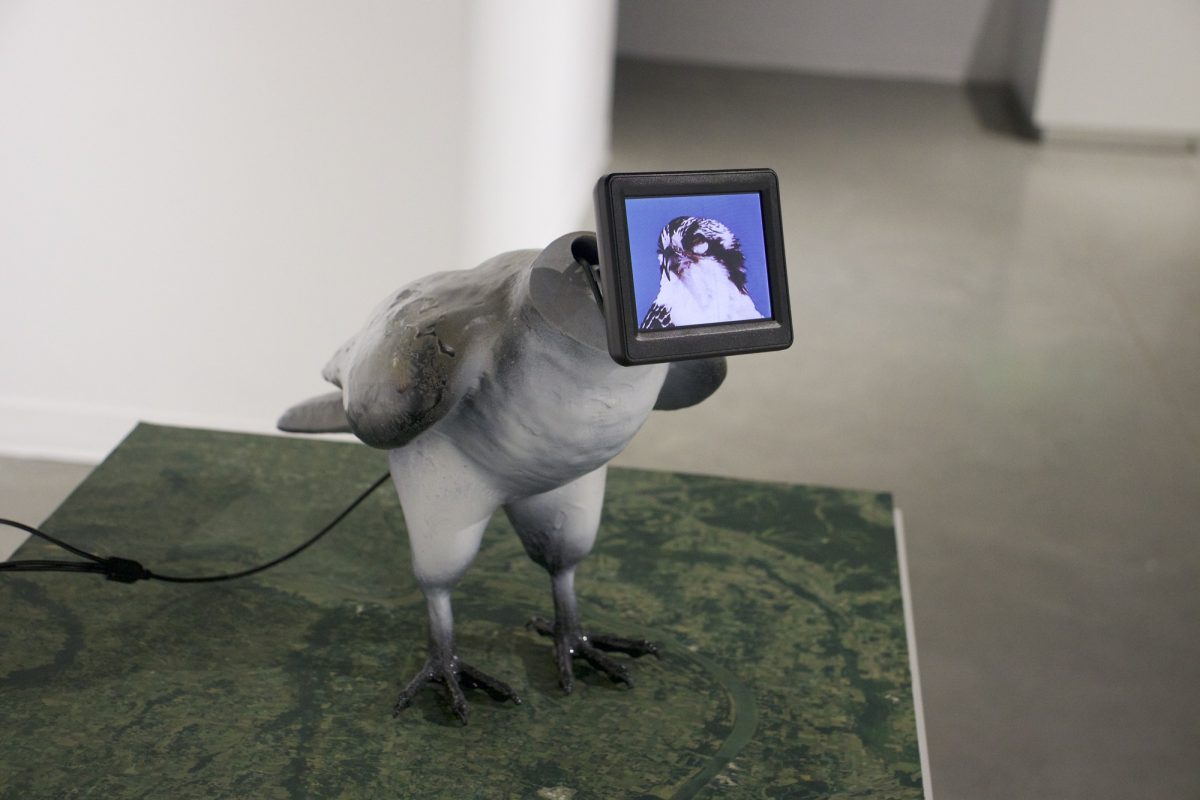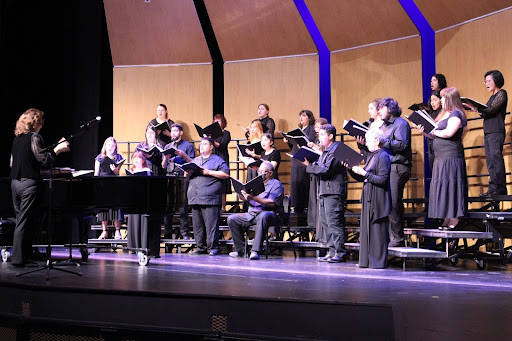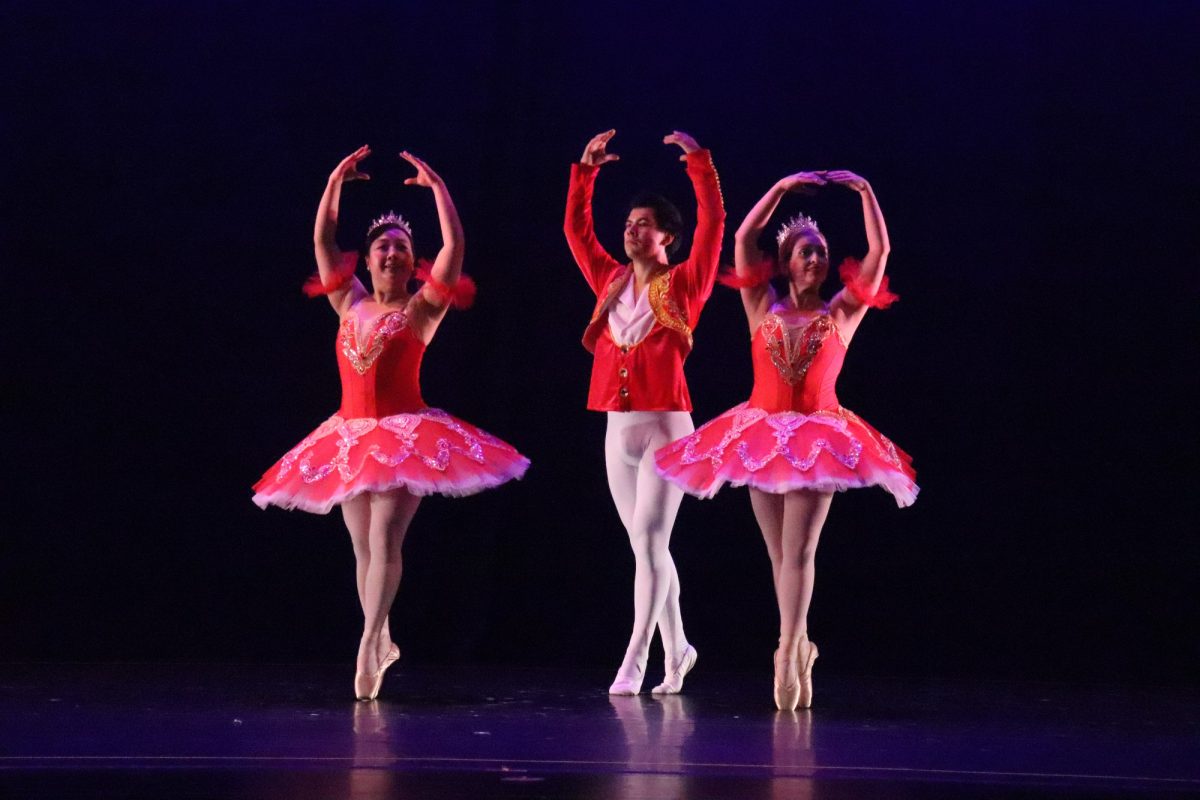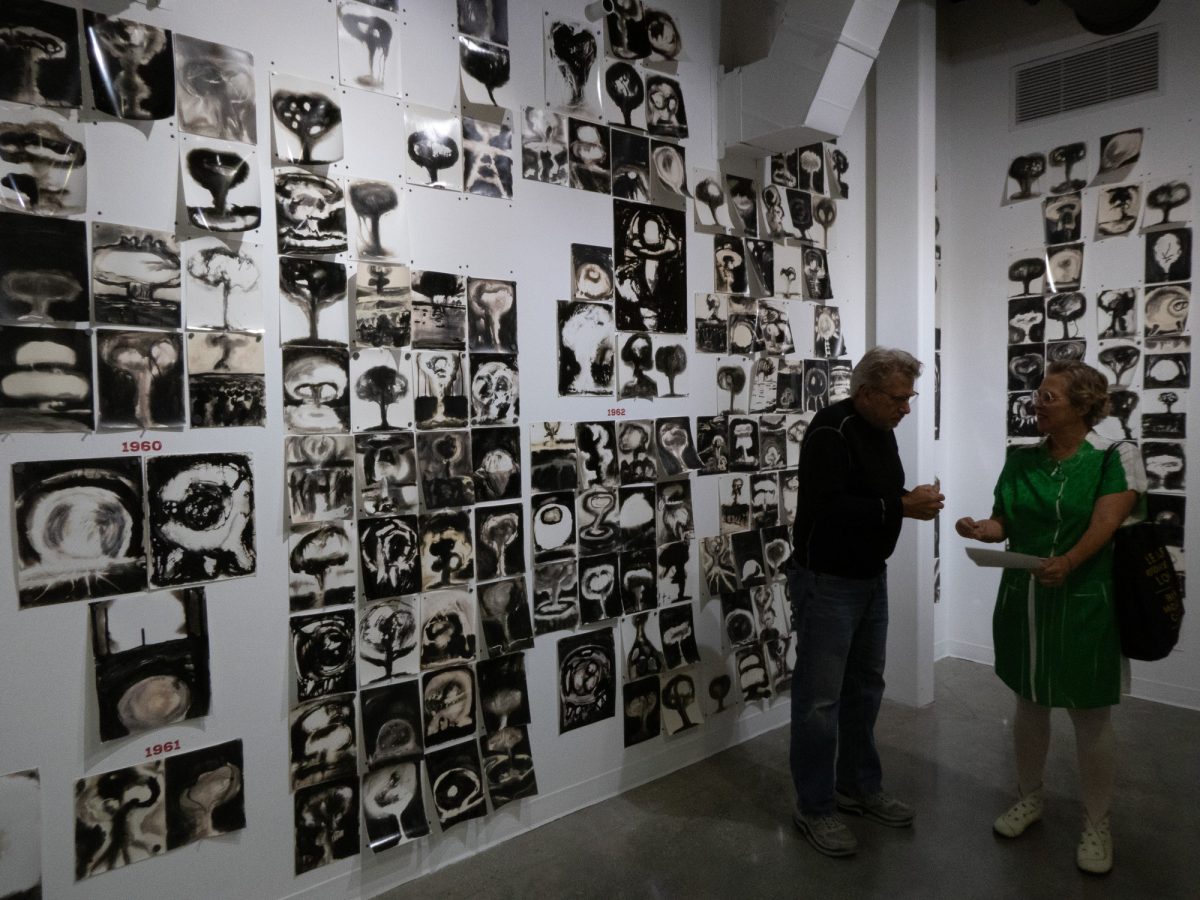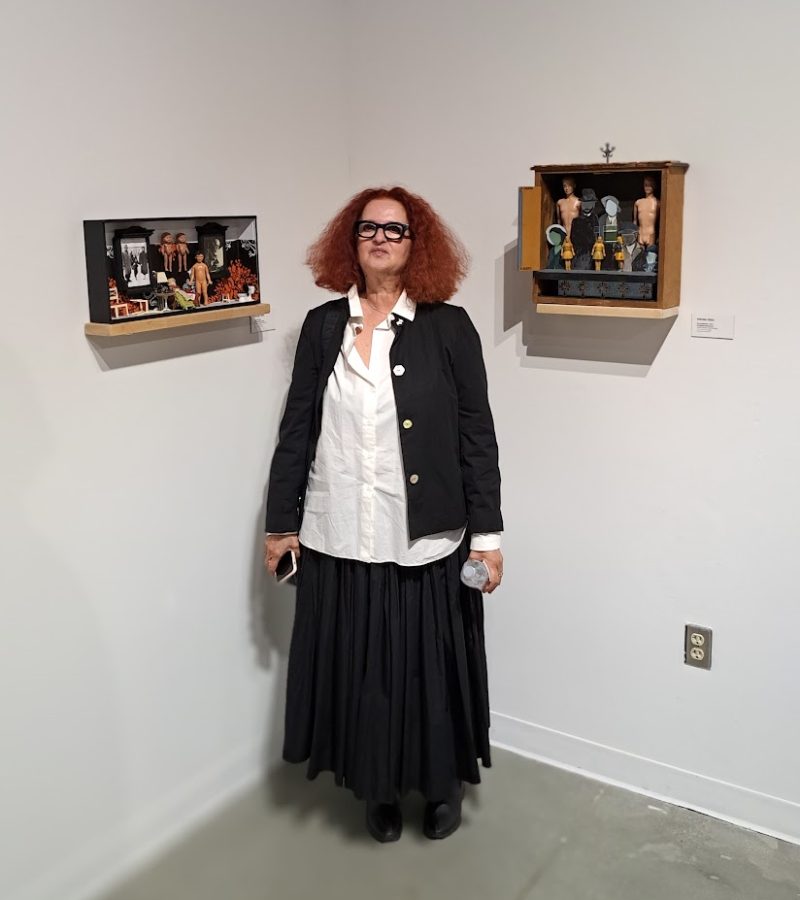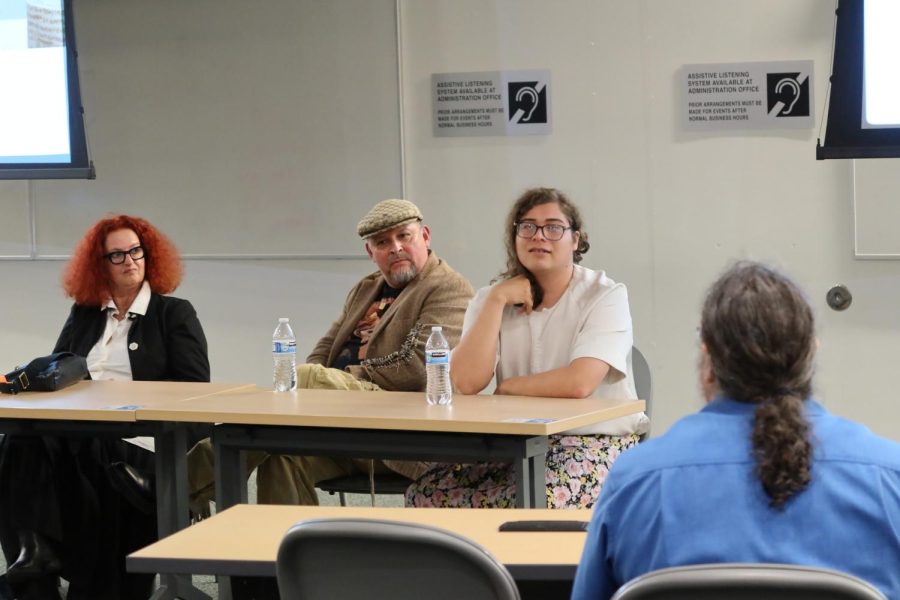Geography, math and art are what greeted visitors on the first day of Cerritos College’s presentation of, “After Image: The Photographic Process(ed),” on Monday in the Cerritos College Art Gallery.
Many of the artists used angles to cut their pictures and reassemble them in interesting shapes and sizes.
Others combined mathematical concepts that incorporated their design and imaginary ideas into their unique finished presentations.
The pieces were assembled from collections from local as well as national and international artists.
Curator and director of the art gallery James MacDevitt is the one who put the exhibition together.
“I always start with a theme for a show and then over the course of maybe six months I look for artists dealing with those particular themes.
“I then start contacting them,” MacDevitt said.
The collection has photo pieces that have been transformed into a combination photo metamorphosis of sorts.
Pieces have been soaked, folded, cut, sewn and have gone through other processes to give them their final presentation uniqueness
Some were soaked in Oregon lake water or had chlorine bleach poured over them to give a strange sense of how moisture in various forms affect old fashioned photo paper produce images.
Art student Gary Gibbons said, “I am more into impressionist arts or situational surrealism than straight photography, but I like both.”
All of the pieces displayed were more than snapshots of photos.
“I would want to create something other than what I could take a snapshot of. When I paint or draw, I want to do things that are different than what I can (do with) just taking my camera out and capturing,” Gibbons said.
Looking at a piece from San Diego by Scott Hazard, Gibbons simply said, “It is pleasant to me.”
Explaining why he brought this style of art to Cerritos College, MacDevitt said, “We live unfortunately in an ‘art desert’ out here in Norwalk.”
His desire to present items that may be found in the north, it inspired him to bring these artistic pieces to the gallery here at Cerritos.
“You have the gallery rows of Chinatown and La Cienega. Those are close enough that if you hopped into your car, you could probably be there in 45 minutes to an hour, depending on rush hour traffic.”
“The benefit of having a show here on campus is that you don’t have to travel that far. It’s kind of effortless,” MacDevitt added.
Additionally, he said, “We have works on display from Berlin and Brazil that aren’t even on display in Los Angeles.”
One of the artists who was present at the gallery’s opening reception was Gregory Michael Hernandez, who talked to people about his art. His pieces included intricately cut and assemble photos in a spherical form.
Hernandez said he took picture of structures from both the outside and inside and then pasted them on a form, in which he called, “A truncated cub octahedron.”
This is a shape the artist claims the Greek mathematician Archimedes discovered.
Hernandez was originally trained as a painter and graduated from Biola University in La Mirada in 1999.
His inspiration for painting came about when he started going to the desert only to discover that he didn’t have time to paint.
Since he brought along his camera, he took photos and made collages.
“Photography was mostly a tool for making paintings,” Hernandez said.
The exhibit runs through Dec.13.


